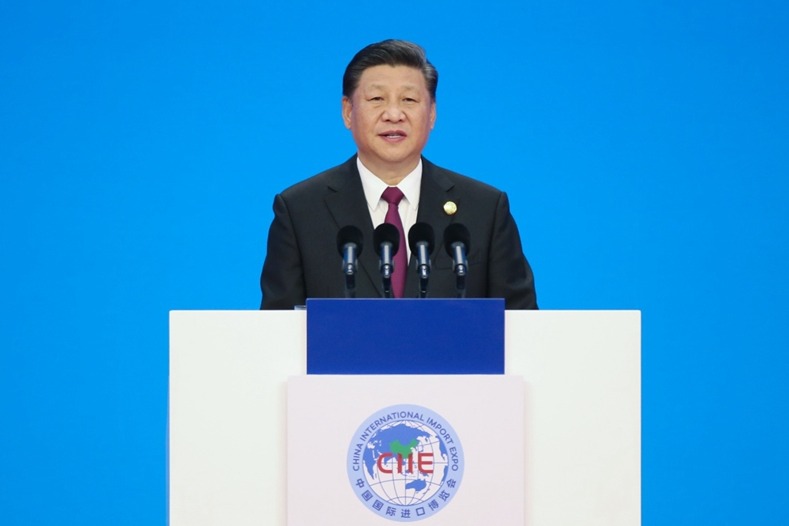Breathing new life into centuries-old pages
By MENG WENJIE and LIU KUN | CHINA DAILY | Updated: 2023-12-20 07:53

Delve into the meticulous craft of ancient book restoration as skilled artisans revive centuries-old manuscripts, overcoming challenges to safeguard our cultural heritage with patience, precision, and evolving techniques.
Books are the most valuable intellectual wealth of humanity. However, there are myriad ancient Chinese classics suffering from different degrees of damage due to various reasons. This led to the emergence of the profession of ancient book restorers.
"People call us the 'ancient book doctors'," said Yang Mingli, 47, an ancient book restorer at the Wuhan Library in Hubei province. "I really like this metaphor, and our youngest 'patient' is at least 100 years old."
Yang started off in the library working in reader service and data entry for ancient books. In 2012, she voluntarily requested to further her studies in the ancient book restoration skills courses offered by the China National Center for the Preservation and Conservation of Ancient Books. Since then, she has gone on to become a full-time restorer for the next 10 years.
According to Yang, the primary "causes of illness" seen in damaged ancient books are aging, acidity, infestation by insects or rodents, fire, mold, ripping, and other factors, which may bring about brittle and fragile pages as well as deterioration and yellowing of the paper. In some cases, the pages of the book could be completely stuck together "as solid as a brick".
In 2019, Yang achieved third place in the National Ancient Books Restoration Skills Competition. "The book I restored at the competition was a rare edition from the Qing Dynasty (1644-1911). The pages were very aged, and the paper was fragile. When taken out, it was carefully wrapped in paper to prevent the pieces from falling off," she said.
According to Yang, the fragments of the book range in size, with the smallest being only a few millimeters long. "It could disappear with just one blow," she joked. Therefore, putting the pieces back together bit by bit, like a jigsaw, demanded a restorer's patience. "Some textual content can be located in earlier editions of the book. But text-free blank pages must be gradually added depending on physical characteristics of the paper, like its shape and texture."
Yang has restored approximately 10,000 pages of ancient books in her over 10 years of work. The most difficult part of the restoration, according to her, is maintaining exact control over every phase.
She gave an example of the challenges involved in preparing adhesive for attaching pages. If the paste is too thin, the repaired pages may easily come off and split, which could affect the quality of the restoration. However, if the paste is too thick, the fixed pages will be tough, challenging to unfold, and vulnerable to insect infection. "Making a suitable paste is the foundation for completing the restoration work," she said.
China is rich in ancient books. According to Yang, there are currently over 30 million ancient classics before 1912 in the country, and the Wuhan Library alone possesses more than 210,000 of them. "An earlier estimate of the National Library of China shows that a third of ancient books in their collection had been damaged," she said.
Although a great number of books need restoration, there is a shortage of book restorers. "There are only three full-time restorers working at the Wuhan Library," Yang said.
Though the task of restoration is demanding, the restoration procedure cannot be rushed. When restorers receive an ancient book, their initial task is not to directly restore it but to observe it and record the book's essential details, according to Bai Yuzhi, a post-90s restorer at the Wuhan Library.
After that, the restorers will unfold the book, remove every page, and repair it on the reverse side. "If the book is severely damaged, it may take one or two days to restore a single page," Bai said. "So it could take at least a month to complete the restoration of an entire book."
Bai graduated from Wuhan University in 2016 with a major in ancient book conservation and is now the fourth generation of restorers at the Wuhan Library. Having started practicing this technique during her extracurricular activities at college in 2014, Bai officially became a restorer in February 2019. "I'm introverted and not good at socializing, so this job suits me very well," she said.
Old origin, new blood
According to Bai, the practice of restoring ancient books was documented from the Wei, Jin, and Southern and Northern Dynasties (220-589). There are also some books from the Ming (1368-1644) and Qing dynasties that specifically recorded the techniques of ancient book restoration, many of which are quite similar to those utilized by contemporary restorers.
Over time, certain traditional restoration techniques and philosophies have been abandoned, and new ones have emerged.
The current guiding principles for modern restorers are "restoring the book as it was" and "minimizing intervention".With these two methods, the paper used for restoration differs significantly from modern paper, which is made using ancient Chinese papermaking techniques. "It is also important to compare the original book and select paper with the most similar material, thickness, and texture," Bai said.
In addition, according to the current approach to restoration, restorers now only use paper to fill in the missing areas so that the pages can be read normally. "In the 1900s or before, book restorers would draw missing lines and complete the text on the restoration paper. However, this kind of excessive intervention approach has now been abandoned," Bai said.
The version used by the restorer for reference is likely different from the missing parts of the book, according to Bai, so adding them without authorization may cause misunderstandings for subsequent historical researchers. "We now preserve the missing information and leave it to specialized researchers to study what this part should be," she said. "The current restoration concept reflects a greater respect for history."
Bai also mentioned that in ancient times, it was common for bookstores to repair books. For sales reasons, they restored the old books as new by adding additives to the paste to make the pages stick firmly. However, the new repair materials currently applied should use as few additives as possible. The ingredients are not only safer, but they can also be easily removed without damaging the original book. "The repaired ancient books will still be damaged with the passage of time, so restorers need to consider minimizing the damage to the original pages of the ancient books when they are repaired in the future." Bai explained.
In addition to advancing restoration concepts, certain scientific instruments have also played a supplementary role in the restoration process. "In ancient times, the composition of paper could only be determined through the experience and observation of restorers," Yang said. "But now we can use instruments to detect and analyze the page and fiber to select the most suitable paper for restoration."
Furthermore, modern technology can also provide a safer preservation environment for slightly damaged ancient books that do not require immediate restoration. "The combination of prevention and restoration can better protect ancient books," Yang said.
The advancement of restoration concepts and progress in science and technology have also facilitated the continuous preservation and innovation of restoration. In addition, the cultivation of new talent and activities showcasing restoration skills have infused fresh energy into the field of the conservation of ancient books.
Both Yang and Bai have participated in the training courses for ancient book restorers organized by the China National Center for the Protection of Ancient Books, which offers free training for library workers nationwide. The center also provides paid training courses on restoration skills for the public, according to Bai.
"There are many young people in the training classes, and experts are also invited to give lectures." Bai recalled. "Through learning from senior experts and communicating with peers, I have learned a lot. Restoring ancient books requires continuous improvement and updating of techniques through practice, communication, and cannot be achieved in isolation."
In addition to encouraging staff in professional training, the Wuhan Library also provides hands-on activities for restoration techniques to the public. "Every time an event is held, the appointments would be filled up quickly," Yang said.
The library also visits schools and universities to show students the process and skills of restoring ancient books. "The students are passionate about the restoration. While experiencing the steps of the restoration process, some little kids are not even as tall as the desk and have to stand on pedals, carefully completing their work," recalled Yang. "This scene has given me hope for inheritance."
"Today, young people are deeply interested in traditional Chinese culture and have a high level of participation," she added. "Every time I participate in communication events and activities, I encounter many young colleagues. I can see that more and more youngsters are dedicating themselves to the preservation of ancient books."
More than restoration
In early 2007, the Chinese Ancient Books Preservation Plan was officially initiated. This initiative marks the first government-led ancient book protection project since the establishment of the People's Republic of China. Its primary goal is to provide comprehensive, scientific, and standardized protection and utilization of ancient books in China.
With the advancement of science and digital technology, the methods for safeguarding ancient books have become more diverse. While the restoration represents the original protection of these books, the digitization of ancient books, conducted by major libraries across the country, signifies the regenerative protection of these literary treasures.
Taking the Hubei Provincial Library as an example, in recent years, it has systematically conducted digital scanning of its rare ancient book collection. According to Liu Weicheng, Party secretary and director of the Hubei Provincial Library and director of the Hubei Provincial Center for Preservation and Conservation of Ancient Books, the library currently has a collection of over 400,000 ancient books and nearly 1 million digital image files. Based on the digitization of classic books, the library has established two distinct digital resource databases.
According to Liu, readers can register and log in to the external network of the databases through remote access, or directly access the databases for free within the library.
"Since the launch of these databases, readers have enthusiastically embraced the ancient books, bringing the words written in them to life," Liu said.
























